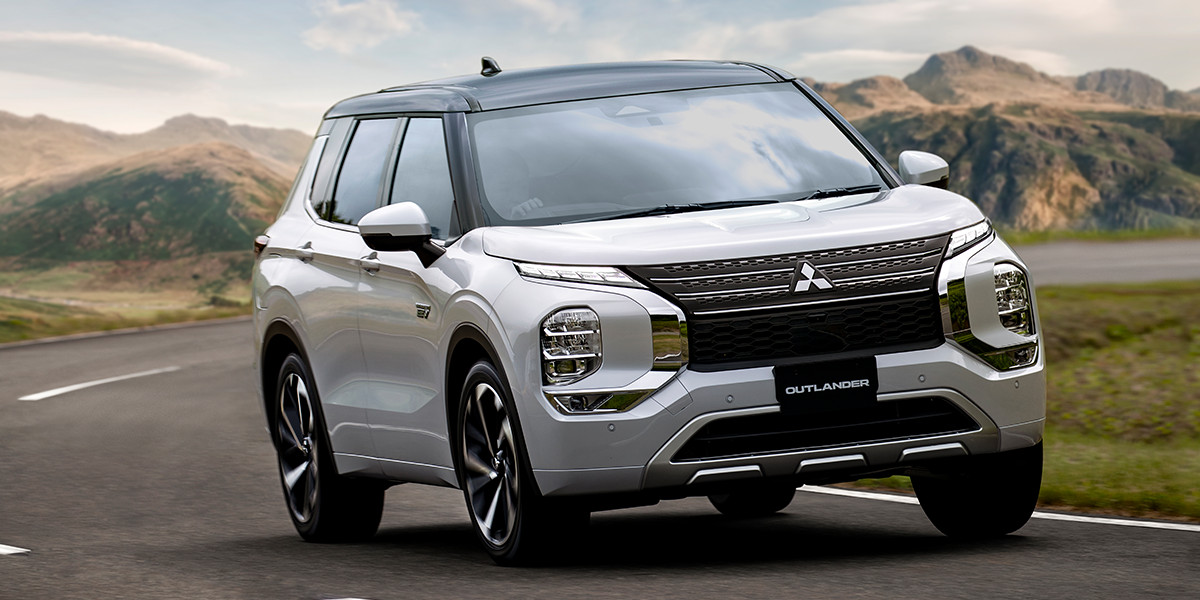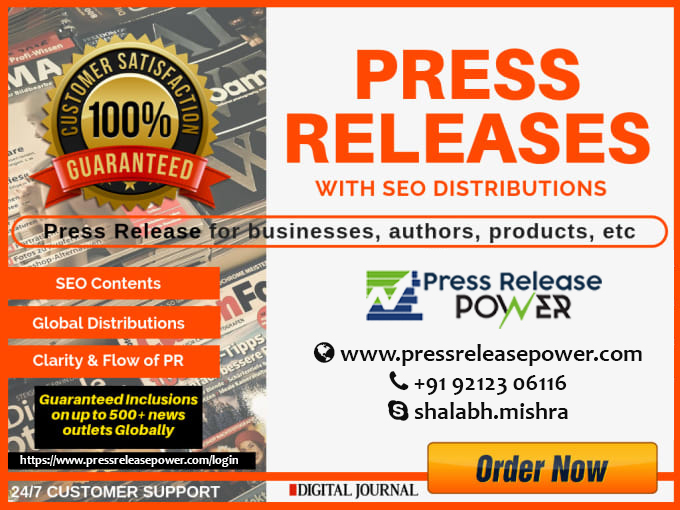What are the Best Practices for Setting and Negotiating Prices for High-Ticket Offers?
Discover essential strategies for setting and negotiating prices for high-ticket offers. Learn best practices to maximize value and drive successful transactions.

In the realm of high-ticket sales, where the stakes are high and the investments are substantial, setting and negotiating prices effectively is crucial for both business success and customer satisfaction. High-ticket offers typically involve premium products or services priced at a significant level, often above $1,000. These sales are not only about the value of the product but also about creating a compelling narrative and understanding the buyer’s psyche. This guide delves into the best practices for setting and negotiating prices for high-ticket offers to maximize profitability while ensuring client satisfaction.
Understand Your Market and Value Proposition
Before you set a price, you need a deep understanding of your market and your unique value proposition. Analyze your target audience to comprehend their needs, preferences, and purchasing behavior. Here’s how you can go about it:
Conduct Market Research
- Competitive Analysis: Examine what competitors are offering and their pricing strategies. Identify gaps or unique aspects of your offer that can differentiate you from the competition.
- Customer Surveys: Use surveys or interviews to gather insights about what potential customers value most and how much they are willing to pay for those features.
Define Your Value Proposition
- Unique Selling Points (USPs): Highlight what makes your offer unique and why it is worth the high price. Whether it’s superior quality, exceptional service, or exclusive features, make sure your value proposition is clear and compelling.
- Benefits vs. Features: Focus on how your offer solves a problem or fulfills a need rather than just listing features. High-ticket buyers are often looking for outcomes and benefits.
Set a Pricing Strategy Aligned with Your Brand
Your pricing strategy should reflect your brand’s positioning and align with your overall business goals. Here are some strategies to consider:
Premium Pricing
- High-End Positioning: Set your prices higher to position your product or service as a luxury or premium option. This approach works well if you want to emphasize exclusivity and high value.
- Justification: Ensure that the higher price is justified by the value you provide. High-ticket buyers are often willing to pay more for perceived value and quality.
Value-Based Pricing
- Customer Perceived Value: Set prices based on the perceived value to the customer rather than just the cost of production. This involves understanding the ROI or transformation your offer provides.
- Tiered Pricing: Offer different pricing tiers to cater to various customer segments, providing more options while still maintaining a premium perception.
Bundling and Packaging
- Create Packages: Bundle your high-ticket offer with additional services or products to increase perceived value and encourage upsells.
- Custom Solutions: Offer customized packages or solutions to cater to specific client needs, which can justify a higher price point.
Establish a Clear Pricing Structure
A well-defined pricing structure helps in maintaining consistency and transparency, which is crucial for high-ticket sales. Consider these aspects:
Transparent Pricing
- Breakdown Costs: Clearly outline what is included in the price to avoid confusion and build trust. Provide a detailed breakdown of costs if necessary.
- Avoid Hidden Fees: Be upfront about any additional costs to ensure there are no surprises for the customer.
Flexible Payment Options
- Installments: Offer payment plans or financing options to make the high-ticket offer more accessible to a broader audience.
- Discounts and Promotions: Consider offering limited-time discounts or promotions to incentivize early purchases without devaluing your offer.
Master the Art of Negotiation
Negotiating high-ticket prices requires skill and strategy. Here are some best practices to keep in mind:
Know Your Bottom Line
- Minimum Acceptable Price: Have a clear understanding of your minimum acceptable price and stick to it. Know how low you can go without compromising profitability.
Negotiate Value, Not Price
- Focus on Benefits: When negotiating, emphasize the value and benefits of your offer rather than getting fixated on the price.
- Add Value: If a prospect insists on a lower price, consider adding value through additional services or features rather than reducing the price.
Be Prepared to Walk Away
- Set Boundaries: If negotiations are not progressing in a favorable direction, be prepared to walk away. Sometimes, sticking to your pricing can lead to better outcomes in the long run.
Build Relationships
- Trust and Rapport: Build strong relationships with potential clients to create trust and rapport. This can make negotiations smoother and more favorable.
- Consultative Approach: Use a consultative approach to understand the client's needs better and tailor your negotiation strategy accordingly.
Utilize Psychological Pricing Tactics
Psychological pricing can influence perceptions and buying decisions, especially in high-ticket sales. Consider these tactics:
Anchoring
- Initial High Price: Present a higher initial price to set a reference point. When you then offer a discount or lower price, it appears more attractive in comparison.
Scarcity and Urgency
- Limited Availability: Highlight limited availability or exclusive offers to create a sense of urgency. This can encourage prospects to act quickly.
Social Proof
- Testimonials and Case Studies: Showcase testimonials, case studies, or success stories from previous clients to build credibility and justify your pricing.
Monitor and Adjust Pricing Strategies
The market and customer preferences can change, so it’s essential to monitor and adjust your pricing strategies regularly. Here’s how:
Track Performance
- Sales Metrics: Monitor sales performance and customer feedback to gauge the effectiveness of your pricing strategy. Look for trends and adjust accordingly.
- Competitor Pricing: Keep an eye on competitor pricing and market changes to ensure your prices remain competitive.
Continuous Improvement
- Gather Feedback: Regularly collect feedback from clients to understand their perception of value and pricing. Use this information to make necessary adjustments.
- Test Pricing Models: Experiment with different pricing models and strategies to find what works best for your business and audience.
Setting and negotiating prices for high-ticket offers is a multifaceted process that requires a deep understanding of the market, a clear value proposition, and strategic pricing practices. By conducting thorough market research, defining a strong value proposition, establishing a transparent pricing structure, mastering negotiation techniques, utilizing psychological pricing tactics, and continuously monitoring your strategies, you can optimize your pricing for high-ticket offers and drive success.
Implementing these best practices will not only help you set appropriate prices but also negotiate effectively, ensuring that both you and your clients achieve satisfactory outcomes. Remember, in the world of high-ticket sales, the value you deliver and the way you communicate that value are just as important as the price you set.
Leverage Data and Analytics
Data and analytics play a crucial role in refining pricing strategies and understanding market dynamics. Here's how to effectively use data to inform your pricing decisions:
Analyze Customer Data
- Purchasing Behavior: Track customer purchasing behavior to identify patterns and preferences. This can help you understand which features or services are most valued and how much customers are willing to pay.
- Segmentation: Use data to segment your audience based on various criteria such as demographics, purchase history, and engagement levels. Tailor your pricing strategies to different segments to maximize appeal.
Utilize Pricing Models
- A/B Testing: Implement A/B testing for different pricing models to determine which resonates best with your audience. This involves offering different prices or packages to different segments and analyzing the results.
- Price Elasticity: Study the price elasticity of your offer to understand how changes in price affect demand. This can help you find the optimal price point that balances demand and profitability.
Monitor Industry Trends
- Market Reports: Regularly review industry reports and market trends to stay informed about changes that may impact your pricing strategy. This includes shifts in consumer behavior, economic conditions, and emerging competitors.
- Benchmarking: Compare your pricing against industry benchmarks to ensure it aligns with market expectations and remains competitive.
Enhance Your Sales and Marketing Approach
Your sales and marketing approach can significantly impact the effectiveness of your pricing strategy. Here are some ways to enhance your approach:
Develop a Strong Sales Pitch
- Highlight Value: Craft a compelling sales pitch that focuses on the value and benefits of your high-ticket offer. Clearly articulate how your offer solves a problem or meets a need.
- Tailored Proposals: Customize your proposals to address the specific needs and concerns of each prospect. Personalization can make your offer more appealing and justify the high price.
Invest in Content Marketing
- Educational Content: Create content that educates your audience about the value of your offer. This can include blog posts, whitepapers, webinars, and case studies that showcase the benefits and outcomes of your high-ticket offer.
- Thought Leadership: Position yourself as a thought leader in your industry by sharing insights and expertise. This can build credibility and justify your pricing.
Build a Strong Online Presence
- Website Optimization: Ensure your website is optimized to highlight your high-ticket offer effectively. This includes having clear pricing information, compelling sales copy, and easy-to-navigate pages.
- Social Proof: Leverage social proof such as client testimonials, reviews, and endorsements to build trust and reinforce the value of your offer.
Provide Exceptional Customer Support
Exceptional customer support can enhance the perceived value of your high-ticket offer and justify the investment. Here’s how to provide outstanding support:
Pre-Sales Support
- Consultations: Offer free consultations or strategy sessions to help potential clients understand the benefits of your offer and address any concerns they may have.
- Information Resources: Provide comprehensive resources such as FAQs, product demos, and detailed descriptions to help prospects make informed decisions.
Post-Sales Support
- Onboarding: Implement a thorough onboarding process to ensure clients get the most out of your offer. This can include training, guides, and personalized support.
- Ongoing Assistance: Offer continuous support and follow-up to address any issues or questions that may arise after the purchase. This helps build long-term relationships and ensures client satisfaction.
Evaluate and Refine Your Strategy Regularly
To maintain success and adaptability in high-ticket sales, it’s essential to evaluate and refine your pricing strategy regularly:
Review Performance Metrics
- Sales Performance: Regularly review sales performance to identify trends, successes, and areas for improvement. Use this data to make informed decisions about pricing adjustments.
- Customer Feedback: Collect and analyze feedback from clients to understand their perception of value and pricing. Use this information to make necessary adjustments.
Adjust Based on Market Changes
- Economic Conditions: Be responsive to changes in economic conditions or market trends that may impact pricing. Adjust your strategies as needed to remain competitive and relevant.
- Competitive Landscape: Stay aware of changes in the competitive landscape and adjust your pricing strategies to maintain a competitive edge.
Continuous Improvement
- Iterate and Adapt: Continuously iterate and adapt your pricing strategies based on insights and feedback. This iterative approach helps you stay aligned with market demands and client expectations.
Optimize Your Pricing Presentation
How you present your pricing can significantly impact your sales. An effective pricing presentation helps clients understand the value and makes the offer more appealing. Consider the following:
Clear and Professional Presentation
- Visual Clarity: Use clear and professional visuals to present pricing information. Infographics, comparison charts, and well-designed proposals can help clients easily understand the offer.
- Detailed Breakdown: Provide a detailed breakdown of what’s included in the price. This helps clients see the full value and justifies the cost.
Tailored Proposals
- Customization: Customize your proposals to address the specific needs and goals of each client. Highlight how your offer aligns with their objectives and provides a solution to their pain points.
- Benefits Focus: Emphasize the benefits and outcomes of your offer rather than just the features. Clients are more likely to invest in a high-ticket offer when they see how it will impact their goals.
Interactive Tools
- Cost Calculators: Implement interactive tools like cost calculators or ROI estimators on your website. These tools can help clients visualize the value and potential return on their investment.
- Live Demos: Offer live demonstrations or trials of your high-ticket offer. This hands-on experience can help clients understand the value and make an informed decision.
Create a Strong Value Justification Framework
A robust value justification framework helps clients see why your high-ticket offer is worth the investment. Here’s how to build one:
ROI Analysis
- Quantify Benefits: Provide a clear analysis of the return on investment (ROI) your offer provides. Quantify the benefits in terms of cost savings, increased revenue, or other measurable outcomes.
- Case Studies: Use case studies and success stories to illustrate how previous clients have benefited from your offer. Real-world examples can be powerful in demonstrating value.
Cost-Benefit Comparison
- Competitive Comparison: Compare your offer to competitors to show how your pricing is justified. Highlight the unique features or advantages that set your offer apart.
- Long-Term Value: Emphasize the long-term value and benefits of your offer. Clients are often willing to pay a premium if they see lasting value and benefits.
Build Strong Relationships with Key Decision Makers
In high-ticket sales, relationships with key decision-makers can be critical. Building and nurturing these relationships can influence the pricing negotiation process:
Understand Decision-Makers’ Needs
- Identify Key Stakeholders: Identify and understand the needs and priorities of key decision-makers involved in the purchasing process.
- Tailor Your Approach: Customize your approach to address the specific concerns and objectives of each decision-maker.
Regular Communication
- Engagement: Maintain regular communication with decision-makers throughout the sales process. Keep them informed about updates, provide additional information, and address any questions or concerns.
- Feedback Loop: Create a feedback loop to gather insights from decision-makers and use this information to refine your offer and pricing strategy.
Leverage Strategic Partnerships
Strategic partnerships can enhance the value of your high-ticket offer and provide additional benefits to clients:
Collaborate with Complementary Businesses
- Partnership Opportunities: Partner with businesses that offer complementary products or services. This can create bundled offers or additional value for clients.
- Joint Marketing Efforts: Collaborate on joint marketing efforts to reach a broader audience and increase visibility for your high-ticket offer.
Leverage Industry Influencers
- Influencer Endorsements: Work with industry influencers or thought leaders to endorse your high-ticket offer. Their endorsement can lend credibility and attract potential clients.
- Guest Contributions: Contribute guest content or participate in interviews with industry influencers to showcase your expertise and build credibility.
Implement a Robust Follow-Up Process
Effective follow-up is crucial for closing high-ticket sales and ensuring client satisfaction. Here’s how to implement a robust follow-up process:
Timely Follow-Ups
- Follow-Up Schedule: Establish a clear follow-up schedule to stay engaged with prospects and clients. Timely follow-ups show professionalism and keep the sales process moving forward.
- Personalized Communication: Personalize your follow-up communication based on previous interactions and client preferences.
Addressing Concerns
- Problem Resolution: Be proactive in addressing any concerns or objections that arise during the follow-up process. Provide solutions or additional information to alleviate any doubts.
- Continual Value: Continue to demonstrate the value of your offer through follow-up communications. Share relevant insights, case studies, or updates to reinforce the benefits.
Measure Success and Iterate
Continually measure the success of your pricing and negotiation strategies and make iterative improvements:
Key Performance Indicators (KPIs)
- Sales Metrics: Track KPIs such as conversion rates, average deal size, and sales cycle length to assess the effectiveness of your pricing strategy.
- Customer Satisfaction: Measure customer satisfaction through surveys and feedback to understand how clients perceive the value of your offer.
Continuous Improvement
- Adjust Strategies: Use insights from performance metrics and customer feedback to make data-driven adjustments to your pricing and negotiation strategies.
- Innovate: Continuously seek innovative approaches to enhance your high-ticket offers and pricing strategies. Stay adaptable to market changes and evolving client needs.
Setting and negotiating prices for high-ticket offers is a complex and dynamic process that requires a strategic approach, deep market understanding, and effective communication. By leveraging data and analytics, optimizing your pricing presentation, creating a strong value justification framework, building relationships, and implementing a robust follow-up process, you can enhance your success in high-ticket sales.
Remember, the goal is to not only set a price that reflects the value of your offer but also to build trust, demonstrate benefits, and effectively communicate the worth of your high-ticket products or services. With a focus on continuous improvement and a commitment to delivering exceptional value, you can achieve favorable outcomes in high-ticket sales and establish long-term client relationships.
FAQ: Setting and Negotiating Prices for High-Ticket Offers
1. What is a high-ticket offer?
Answer: A high-ticket offer refers to a product or service priced significantly higher than average, often above $1,000. These offers typically involve premium quality, exclusivity, or specialized features, and require a more strategic approach to pricing and negotiation due to their substantial cost.
2. How do I determine the right price for my high-ticket offer?
Answer: Determining the right price involves understanding your market, defining your value proposition, and analyzing your costs. Conduct market research to assess competitors' pricing and customer expectations. Calculate the perceived value of your offer based on the benefits and ROI it provides. Align your pricing strategy with your brand positioning and overall business goals.
3. What are the best pricing strategies for high-ticket offers?
Answer: Effective pricing strategies for high-ticket offers include:
- Premium Pricing: Position your offer as a luxury or premium option to emphasize exclusivity and high value.
- Value-Based Pricing: Set prices based on the perceived value to the customer, considering the outcomes and benefits your offer provides.
- Bundling and Packaging: Create packages that include additional services or products to increase perceived value and encourage upsells.
- Tiered Pricing: Offer different pricing tiers to cater to various customer segments.
4. How can I justify the high price of my offer to potential clients?
Answer: To justify a high price, focus on demonstrating the value and benefits your offer provides. Use ROI analysis to quantify the benefits in terms of cost savings or increased revenue. Highlight your unique selling points and differentiate your offer from competitors. Provide case studies, testimonials, and detailed value breakdowns to reinforce the justification.
5. What should I include in a pricing proposal for high-ticket offers?
Answer: A pricing proposal for high-ticket offers should include:
- Detailed Pricing Information: Clear breakdown of costs and what is included in the price.
- Value Proposition: Explanation of the benefits and outcomes of your offer.
- Customization Options: Information on any customizable features or packages.
- Payment Terms: Details on payment options, such as installment plans or financing.
- Case Studies or Testimonials: Evidence of success or satisfaction from previous clients.
6. How can I handle price objections during negotiations?
Answer: To handle price objections:
- Understand the Objection: Listen carefully to the client’s concerns and address them directly.
- Emphasize Value: Reiterate the value and benefits of your offer to justify the price.
- Offer Alternatives: If possible, provide alternative solutions or additional features that address the client’s concerns.
- Be Prepared to Negotiate: Have a clear understanding of your minimum acceptable price and be prepared to negotiate terms that work for both parties.
7. Are there any psychological pricing tactics that work well for high-ticket offers?
Answer: Yes, psychological pricing tactics can be effective:
- Anchoring: Present a higher initial price to set a reference point, making any discounts or lower prices seem more attractive.
- Scarcity and Urgency: Highlight limited availability or exclusive offers to create a sense of urgency.
- Social Proof: Use testimonials, case studies, and endorsements to build credibility and reinforce the perceived value of your offer.
8. How can I use data and analytics to optimize my pricing strategy?
Answer: Utilize data and analytics by:
- Tracking Sales Metrics: Monitor key performance indicators such as conversion rates, average deal size, and sales cycle length.
- Conducting A/B Testing: Test different pricing models or offers to see which performs better.
- Analyzing Customer Feedback: Gather insights from customer feedback to understand perceptions of value and pricing.
- Monitoring Market Trends: Stay informed about industry trends and competitor pricing to adjust your strategy as needed.
9. What role does customer support play in pricing high-ticket offers?
Answer: Exceptional customer support plays a critical role by:
- Enhancing Perceived Value: Providing outstanding pre-sales and post-sales support can increase the perceived value of your offer and justify the high price.
- Building Trust: Strong customer support helps build trust and strengthens client relationships, making them more likely to invest in a high-ticket offer.
- Addressing Concerns: Offering timely assistance and resolving issues effectively can improve customer satisfaction and reduce objections.
10. How often should I review and adjust my pricing strategy?
Answer: You should review and adjust your pricing strategy regularly, ideally on a quarterly or bi-annual basis. This allows you to respond to market changes, competitor actions, and evolving customer needs. Continuously monitor performance metrics, gather feedback, and stay informed about industry trends to make informed adjustments.
Get in Touch
Website – https://www.webinfomatrix.com
Mobile - +91 9212306116
Whatsapp – https://call.whatsapp.com/voice/9rqVJyqSNMhpdFkKPZGYKj
Skype – shalabh.mishra
Telegram – shalabhmishra
Email - info@webinfomatrix.com
Tags
What's Your Reaction?




















